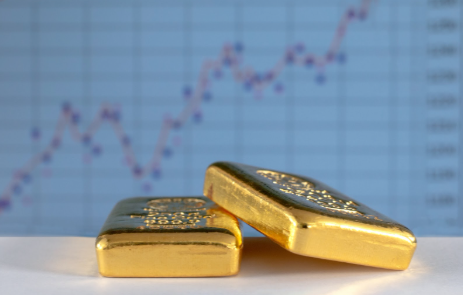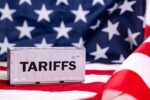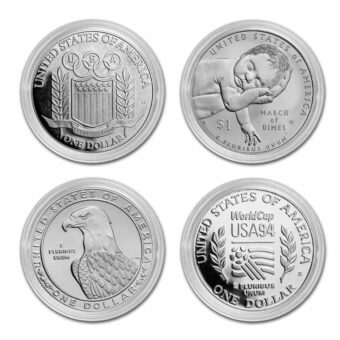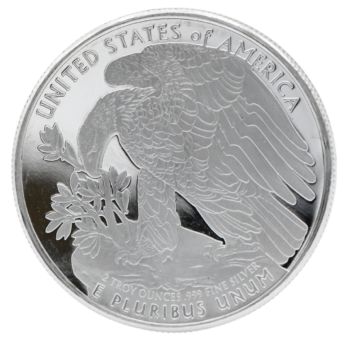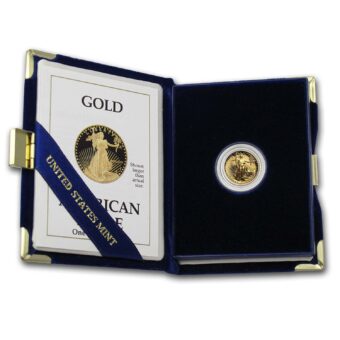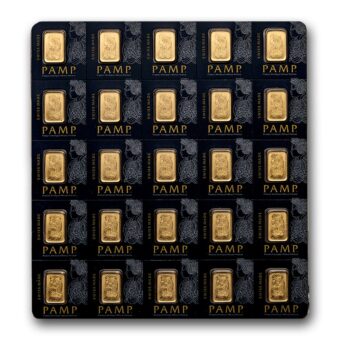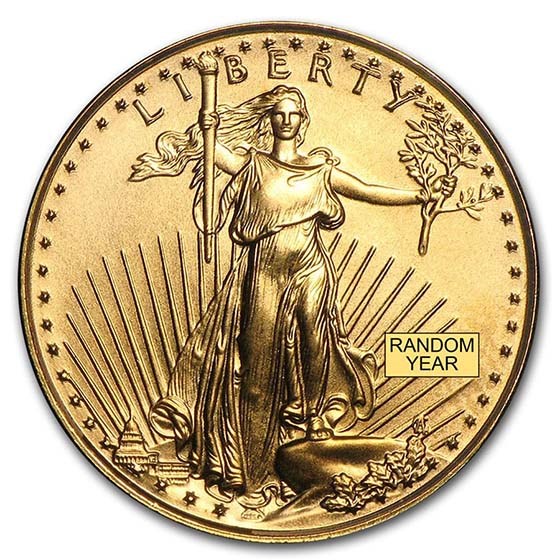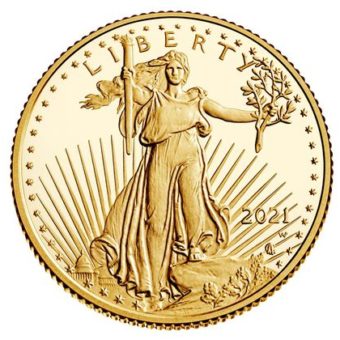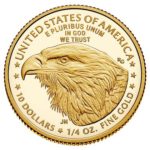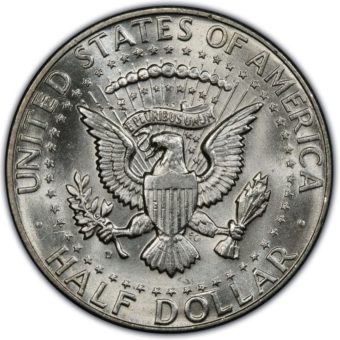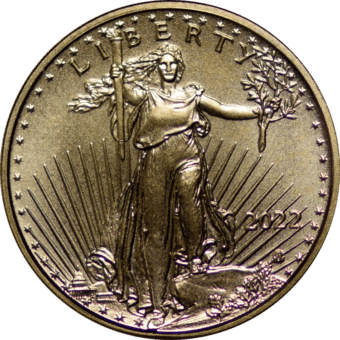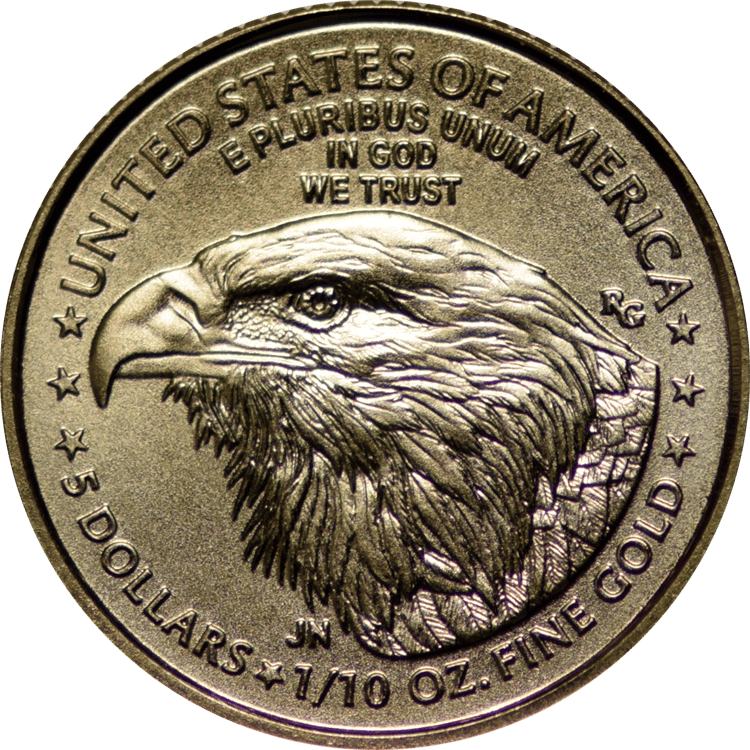Weekly Market Overview: April 7–11, 2025
Monday, April 7:
Gold prices started the week under pressure, dipping to $2,996.70, with broader market forces driving sentiment. Rising Treasury yields—an indicator of increasing return expectations on U.S. government debt—put downward pressure on gold, which typically performs better in low-rate environments. A strengthening U.S. dollar added another headwind, reducing demand from overseas buyers. Meanwhile, falling crude oil prices contributed to the deflationary mood. Earlier in the day, a temporary boost came from rumors of a potential 90-day tariff pause, which sparked momentary optimism across both gold and equities. However, the White House quickly denied the speculation, and President Trump reiterated a hard stance on China, promising additional tariffs. This abrupt shift in tone unsettled markets and reversed the earlier gains.
Tuesday, April 8:
Gold bounced back with a gain of $37, closing at $3,010, while silver maintained ground above the $30 mark. Buying emerged on dips, as some market participants saw value at lower levels amid persistent geopolitical and economic noise. U.S. equities staged a sharp rally, briefly easing risk aversion, though underlying anxieties remained. Near-daily tariff announcements by the U.S. administration and retaliatory measures from foreign governments continue to cast a shadow over trade-sensitive sectors. The Wall Street Journal drew comparisons between today’s policy environment and the 1930s Smoot-Hawley Tariff Act—an era associated with global trade contraction and economic fallout. This historical echo added weight to the sense of caution pervading the market.
Wednesday, April 9:
In a dramatic midday surge, gold leapt over $100 to settle at $3,106.10. The rally was fueled by a combination of safe-haven buying and speculation about structural stress in the Treasury market. Spiking Treasury yields raised alarms about the stability of long-dated U.S. debt, and concerns emerged that large hedge funds might be forced to unwind complex interest rate swap positions. These derivative positions, originally constructed to benefit from a deregulated financial landscape, suddenly appeared vulnerable in the face of regulatory inertia and rising rates. Silver also joined the rally, adding strength across the metals complex. The sheer momentum of the move underscored the fragility of sentiment, especially when confidence in core financial systems begins to wobble.
Thursday, April 10:
Gold extended its gains, surging past $3,200, with silver posting modest advances as well. A key catalyst was the latest Consumer Price Index (CPI) report, which came in below expectations for March. This softer inflation data reinforced the belief that the Federal Reserve might lean dovish, potentially delaying future rate hikes or even considering cuts. Lower rate expectations typically support gold prices, as they reduce the opportunity cost of holding non-yielding assets. At the same time, equities struggled to maintain momentum from Wednesday’s rally, with the S&P 500 retreating. The mixed performance highlighted growing caution, particularly as trade uncertainty and concerns about Treasury market liquidity continued to hover.
Friday, April 11:
Gold prices touched a record intraday high of $3,255.90 before settling around $3,235.20 by midday, notching a $57.70 gain. Silver also climbed, trading at $31.45, confirming strong momentum across the precious metals space. The continued rise was supported by ongoing demand for stability amid choppy global stock markets and unresolved tensions between the U.S. and China. The tariff war intensified, with the U.S. imposing a 145% levy and China responding with a 125% hike. The rhetoric around economic decoupling escalated, with Dow Jones Newswires noting: “The U.S. and China are going to economic war—and everyone will suffer.” Regardless of one’s view on the policy, the markets’ message was clear: in times of escalating macro tension, tangible assets often outperform.
Global Gold Demand Reflects Economic Considerations
According to fresh insights from the World Gold Council, demand for gold in the first quarter of 2025 has reached notable highs, with global ETF inflows totaling 226.5 metric tons—valued at $21.1 billion. This marks the second-largest quarterly dollar inflow on record and highlights gold’s increasing relevance in today’s macro environment. Market participants are allocating toward gold not merely out of reaction, but as part of a strategic shift toward more grounded asset classes.
Regional Insights:
- North America: Dominated March inflows with 133.8 tons, representing 61% of the total. This concentration reflects North American concerns over interest rate volatility and financial market leverage.
- Europe: Added 54.8 tons, signaling renewed interest from markets facing currency challenges and uneven growth. This marks Europe’s most robust gold ETF quarter since Q1 2020.
- Asia: With 9.5 tons, demand remains steady, especially in China and Japan, where local market instability and rising trade friction are reinforcing a preference for hard assets.
Driving Factors:
The backdrop of rising inflation, potential liquidity constraints, and uneven economic growth is prompting people to diversify beyond traditional financial instruments. Equity markets, though still near highs, have shown signs of fragility, particularly when policy uncertainty clouds the outlook. Even in environments of rising bond yields—typically a headwind for gold—demand remains firm, suggesting deeper structural drivers at play.
Analyst Insight:
As the World Gold Council noted, “The willingness to hold and reluctance to sell – given current extreme policy uncertainty – could generate real momentum.” In contrast to previous gold rallies in 2011 and 2020, today’s move is viewed as more fundamentally supported and potentially more durable.
Market Dynamics: Short Squeeze Triggers a Major Rally
Wednesday’s market explosion was one for the history books. After President Trump unexpectedly announced a temporary pause on tariffs (excluding China), a cascade of hedge fund short positions was set off. These funds, having bet heavily against U.S. equities, were forced to unwind in rapid succession. The result: a full-blown short squeeze, with the S&P 500 rocketing 9.5%—its third-largest one-day gain since World War II.
Over 30 billion shares traded, setting an 18-year record, as both short covering and momentum buying pushed prices higher. Even long-only funds jumped in, adding fuel to the fire, especially in the tech sector where high-quality semiconductor names led the rally.
The speed and magnitude of the move underscored how quickly sentiment can pivot in today’s algorithm-driven markets. With liquidity thinning in the futures market (trades dropped to just $2 million per transaction), price movements were amplified significantly.
While some viewed it as a temporary squeeze, others saw early signs of renewed risk appetite. Still, the fragility remains, with many funds still holding short exposure and volatility hovering near multi-month highs.
Broad Market Rally Following Tariff Suspension
In a rare moment of clarity, markets rallied across the board after President Trump paused tariffs on all countries except China. The policy shift, framed as a strategic gesture to promote global negotiation, sparked a classic “everything rally”—stocks, crypto, and commodities all surged.
Gold, which had briefly dipped on the announcement, quickly reversed course and ended the day near $3,100. Silver followed suit, jumping above $31. Bitcoin, too, gained ground, rising over 3%. The Dow and S&P gained more than 6% within minutes, while the Nasdaq added 6.5%.
The Treasury Secretary emphasized the move was not about retreat but about creating leverage in ongoing negotiations, with China singled out for additional tariffs due to what the administration called “persistent unfair trade practices.”
While short-term sentiment improved, the medium-term outlook remains complex. Markets may have reacted positively to de-escalation, but the underlying drivers—debt concerns, rate uncertainty, and trade instability—are far from resolved.
Federal Reserve’s Stance Amid Inflation and Growth Crosscurrents
Boston Fed President Susan Collins addressed the evolving economic landscape during a speech at Georgetown University, offering insight into how the central bank views the implications of new tariffs. While acknowledging that these measures are likely to push inflation above 3% in the short term, Collins stopped short of advocating immediate policy action.
She described the Fed’s current stance as “well positioned,” noting that while future cuts are not off the table, any moves would require significant signals of economic slowdown. At the same time, she warned that if inflation expectations become unanchored, the Fed may need to maintain a firm posture.
Collins emphasized the importance of remaining nimble, suggesting that policy could shift quickly in response to economic data. Her remarks reflect the broader challenge faced by the central bank: balancing inflation control with the need to avoid choking off growth.
Upcoming Economic Events: April 14–18
Monday, April 14:
- 6:00 PM: Philadelphia Fed President Patrick Harker speaks
- 7:40 PM: Atlanta Fed President Raphael Bostic speaks
Tuesday, April 15:
- 8:30 AM: Import Price Index (March)
- 8:30 AM: Empire State Manufacturing Survey (April)
Wednesday, April 16:
- 8:30 AM: U.S. Retail Sales (March)
- 9:15 AM: Industrial Production & Capacity Utilization (March)
- 12:00 PM: Cleveland Fed President Hammack speaks
Thursday, April 17:
- 8:30 AM: Initial Jobless Claims (April 12)
- 8:30 AM: Housing Starts & Building Permits (March)
- 8:30 AM: Philadelphia Fed Manufacturing Survey (April)
Friday, April 18:
- 8:00 AM: San Francisco Fed President Mary Daly speaks
Impact on Precious Metals Markets
Next week’s economic data and Fed commentary will offer valuable clues on inflation trends, growth momentum, and monetary policy direction. Each report carries potential implications for gold and silver prices:
- Monday Fed Speakers: Any hawkish tones could temporarily pressure metals, while dovish language may provide a lift.
- Tuesday’s Inflation and Manufacturing Readings: Rising import prices could imply stickier inflation, a bullish sign for metals. A weak manufacturing report could drive safe-haven flows.
- Wednesday’s Retail and Industrial Data: Strong numbers might dampen gold’s appeal, while softness could reinforce its value.
- Thursday’s Labor and Housing Data: Any signs of economic weakness may rekindle defensive positioning into gold and silver.
- Friday’s Daly Remarks: As a key Fed voice, Daly’s tone could shape rate expectations and, in turn, metals sentiment.
In Closing: A Time for Tangible Value
Amid policy pivots, market volatility, and economic crosscurrents, physical gold and silver continue to demonstrate their strategic role in preserving value. When the headlines shift by the hour, it’s the enduring nature of real assets that provides clarity and consistency.
Explore how physical metals can enhance your long-term financial security. Visit PrimeAssetGroup.com or call (866) 706-8781 to learn more. Orders over $5,000 qualify for free shipping and insurance.
Because some assets are not just part of a portfolio—they’re part of a legacy.

